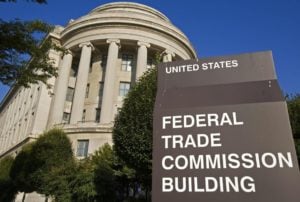

Authors: Sarah Mavula and Yana Ermak
Gone are the days when brands relied on traditional advertising as the sole way of promoting their products. The explosion of e-commerce, combined with the proliferation of smartphones, low television viewership and print readership, and increased fascination with celebrity, have created the ideal conditions for the social media savvy to capitalize on the new standard of receiving media content and benefit from one of the fastest growing markets in advertising. Now more than ever, influencers are at the forefront of commercial advertising, posting marketing content on well-known social media platforms, with some commanding six figures per post.
For many consumers, particularly in the younger demographic, influencers – large or small, celebrities or average Joes and Janes – are trusted voices with the ability to materially impact their purchasing decisions. They take influencer marketing at face value – as an honest opinion of how the influencer feels about the product. Would that impression change if consumers knew that the influencer had a connection with the brand he or she is promoting, beyond simply using the product? Would the form of connection matter (e.g., monetary vs. non-monetary compensation, such as receiving free product or opportunity to attend a fashion or award show)?

The regulatory position in both Canada and the United States is clear – with influence comes responsibility and any “influence” on the influencer must be disclosed. Last year, the US Federal Trade Commission[1] (FTC) issued over 90 educational letters instructing influencers about their obligation to disclose the existence of a “material connection” (i.e., any connection that can affect the weight or credibility of an opinion regardless of whether an influencer genuinely likes a product or brand) between themselves and a brand / product they are promoting. An additional 21 warning letters were issued to influencers who continued to breach the FTC’s rules on disclosure. Of those influencers who received warning letters, two were found in violation of the FTC’s rules and subject to a consent order and an undisclosed settlement. So, while influencers have created a new advertising medium, the rules of advertising remain the same.
Canadian regulators have taken a similar view. In the fall of 2016, Ad Standards[2] issued an Interpretation Guideline on how to disclose any material connection between an influencer and a brand / product, followed, in the fall of 2018, by more detailed Disclosure Guidelines to educate the influencer marketing industry about their disclosure obligations. In particular, the Guidelines contain “do’s” and “don’ts” of influencer disclosure specific to the type of post, the social media platform, as well as the type of material connection.

In its Deceptive Marketing Practices Digest Volume 4, the Canadian Competition Bureau[3] in 2018 created an Influence’s Checklist and an Advertiser’s Checklist to assist both influencers and brands in complying with their material connection disclosure obligations when posting (or permitting to be posted) reviews and opinions online. Notably, the Bureau places responsibilities on both influencers and brands for ensuring that proper disclosures are made and all representations comply with the Competition Act, and influencers and brands alike may be held civilly or criminally accountable for violations. While the conduct that must be proven is the same, criminal liability requires that the representations be made “knowingly or recklessly” (i.e., they require proof of mens rea or criminal intent beyond a reasonable doubt) and is generally reserved for egregious or fraud-like behaviour. While the majority of other cases are dealt with through civil prosecutions, those can still attract very significant fines, restitution orders and other consequences, as explained in our previous article.
While influencer marketing will inevitably continue to grow, its success will likely depend in large part on the influencers’ ability to maintain consumer trust and credibility. Influencers and brands should therefore ensure that appropriate disclosure practices are adopted when promoting a product or a brand.

Key Takeaways:
- Disclosures should state the nature of the material connection. For example, influencers should clearly state whether they received free products, monetary compensation, an invitation to an event or a trip, or any other type of connection. Simply tagging the brand on a social media site, for example, would not meet disclosure requirements.
- Material connections should be disclosed in each social media post.
- Disclosures should be clearly communicated and should be adapted to the medium. For example, disclosures should be clearly made at the beginning of a video, and depending on the social media platform, different types of disclosures should be made. Since on some social media platforms videos often play without sound, visual disclosure would be more appropriate. However, this disclosure method may not be as customary on other platforms where videos are generally played with sound.
- Disclosures should not be buried within hashtags and the use of ambiguous phrases or hashtags should be avoided. Instead, hashtags that are clear, have been recognized and are widely accepted such as “#Ad”, “#Sponsored” or “#XYZ_Ambassador” should be used, while abbreviations such as “#Sp”, “#Spon”, and “#Ambassador” should be avoided.
- Disclosure of material connections should be inseparable from the posted content and placed in such a way that the disclosure travels with the message when shared. Blanket disclosures, such as those found in a profile, a “bio” section or an “about” section are likely insufficient and should be avoided.
- Disclosures should be independent of any particular social media platform. While some platforms have built in disclosure mechanisms that are not part of the post (e.g., a “paid partnership” header), these mechanisms should be used together with the influencer’s independent disclosure rather than as the sole means of disclosure.
- All contractual relationships with influencers should contain clauses requiring compliance with laws and impose obligations on influencers to disclose material connection with the brand.
- Brands should actively monitor their influencers’ activities, in addition to their contractual arrangements, to ensure statements influencers make about their products are not false or misleading and that material connections are properly disclosed.
[1] The Federal Trade Commission is a US federal investigative and enforcement agency responsible for consumer protection and the promotion of competition.
[2] Ad Standards is the Canadian advertising industry’s national not-for-profit self-regulatory body.
[3] The Canadian Competition Bureau is a federal investigative and enforcement agency responsible for enforcing the misleading advertising and deceptive marketing provisions of the Competition Act.

